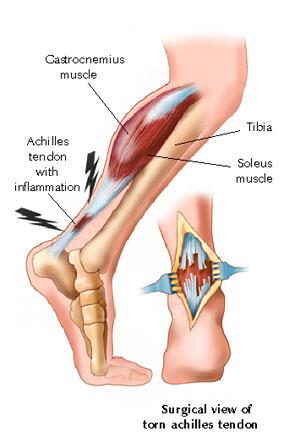Tendonitis Information
Click here to scroll to the list of available medications ↓
Tendonitis is an inflammation of the tendon usually brought about by injury or overuse of a single tendon. It can be a terribly painful condition that prevents adequate use of the tendon or the entire extremity associated with the tendon. For instance, tennis elbow (which refers to tendonitis of the elbow) can limit the use of the entire arm for weeks, and even sometimes months.
The number one sports injury world wide is tendonitis, often the result of poor technique practiced regularly. Tendonitis can bench an athlete for months if not treated properly and effectively. When left unchecked, tendonitis can lead to tearing of the tendon and possible surgical relief, not to mention chronic pain and debilitating discomfort.
Symptoms of tendonitis are usually pain, pain with swelling, stiffness of the tendon that can ease as the tendon warms up, a cracking or creaking sound when the tendon is moved or touched, and a sensitivity to touch. Most patients realize their situation when pain interferes with their ability to move functionally.
Improper conditioning, pushing too hard, poor technique, trauma, infection, and a lack of proper warm up procedures are the usual causes for tendonitis. Some athletes develop tendonitis during competitive events because they have never been taught the appropriate ways to warm up effectively in a reduced amount of time. There are, of course, non-athletic causes that can lead to tendonitis. Patients who have done challenging yard work, who are not prone to exercise and then were particularly active one day, and sometimes the rigors of a demanding job can cause tendonitis.
X-rays are usually taken to rule out other potential painful causes, and in some cases, other imaging techniques may be applied to be sure there is no other trauma to the area. Often a description relating how the pain began is enough for many physicians to determine the source of pain is tendonitis. If imaging techniques do not pick up on any other sort of possible injury, tendonitis is generally diagnosed.

Repetitive tendonitis can lead to several complications, including the break down of the tendon’s general elastic nature. Tendonosis refers to the chronic repetitive stretching of the tendon, which can lead to a permanent condition. Untreated tendonitis can lead to tearing. A torn tendon is usually repaired surgically.
Rest, ice, and over the counter pain relievers are the first line of defense when it comes to tendonitis. Many patients with repeated episodes learn to self diagnose and self treat. This only works when the tendon is given proper time to heal, which in most cases can be six, eight, or even twelve weeks. Physicians usually like to prescribe physical therapy to help offset potential damage and help the appropriate muscles build around the area to deter further damage in the future. Physical therapy can help tremendously when applied appropriately. Changes in exercise or training programs are usually effective and necessary. When at home therapies don’t work, the patient should visit their family physician.
Swelling can be reduced via compression. Some physicians can prescribe a well suited compression sleeve or a splint to help reduce swelling and even help relieve pain. In many cases, an Ace wrap is sufficient. Tendonitis of the Achilles tendon may require a specialized boot which still allows for walking but will keep the ankle stabilized until the tendon sufficiently heals. Regular intervals of twenty minute ice treatments are often recommended to help sustain the swelling as well. Rarely, although in some situations, prescription pain relievers might be necessary.
The fastest way to re-injure a tendon is to use is too quickly before it has healed. If the injury was sustained through a sporting exercise, the patient will have to learn to be patient before delving back into the sport. In other cases, the demands of life might need to be shifted while the injury heals. Proper healing requires cooperation from the patient. Just because the pain has subsided doesn’t mean that the injury has healed enough for extensive use. Patients should always check in with a physician before starting any physical activity.
Prolonged inactivity can also help to intensify pain. The patient should be given exercises that will help keep the tendon loose while it is healing. If the area is immobilized, it should not remain so during the entire day. Periodically, the patient should remove any constricting devices and carefully move the area so that stiffness does not set in.